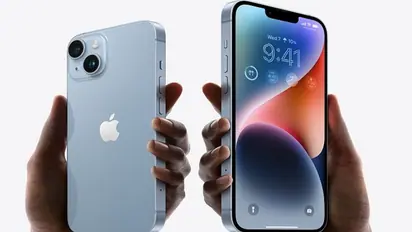Explained: What is eSIM feature added to iPhone 14 series?

Synopsis
Apple has taken a big step in the smartphone world by eliminating the SIM card slot in the US-model of iPhone 14 series entirely. In fact, Jio, Airtel and Vodafone Idea already offer eSIM service for iPhones. Here's what is an eSIM and other details about it.
By completely removing the SIM card port from the US version of the iPhone 14 series, Apple has made a significant advancement in the smartphone industry. Buyers of the iPhone 14 in India and other nations will receive a SIM card slot. Having said that, Apple released the Apple Watch 3 LTE in 2018 and with it, eSIM functionality. Later, eSIM support for iPhones was added, giving consumers the choice to utilise both an eSIM and a conventional SIM card to enjoy the convenience of a dual SIM smartphone.
eSIM has been around for a while in India. In actuality, eSIM service for iPhones is already provided by Jio, Airtel, and Vodafone Idea. Although eSIMs are not a new concept in India, the majority of smartphone users are unaware of their use. While India is not new to eSIMs, the majority of smartphone users are not aware about using eSIMs. In fact, not all iPhone users in India activate eSIM. Now, with Apple offering an eSIM-only model in the US for the iPhone 14 series, the focus is again on what exactly is eSIM.
What is eSIM?
Embedded-Subscriber Identity Module, for those who are unaware, is the acronym for this term. It is essentially a virtual SIM card that is built in a device and is simply enabled on a compatible smartphone.
Also Read | Here's why you should not get your iPhone 14 from United States
In other words, the idea of an eSIM is comparable to the smartphone's internal memory. The internet's memory cannot be removed or expanded, although you can of course store data there. Similar to eSIM, operators like Jio, Airtel, or Vi digitally transfer or activate the Subscriber Identity Module or SIM card data.
Be advised that eSIM has nothing to do with improving cellular reception or internet performance. Simply said, it's a digital replica of your SIM card. Also take notice that you cannot use the same mobile number with both an eSIM and a traditional SIM. Once the eSIM is enabled, the actual SIM card is rendered useless.
Unlike standard SIMs, which can be physically replaced, eSIMs cannot. This implies that you must speak with your telecom provider if you want to switch an eSIM. An eSIM cannot be modified or shared with another phone. However, sharing an eSIM with a smartphone and a linked wristwatch is certainly possible.
Also Read | iPhone 14 has SOS satellite connectivity feature; Will it be available in India?
Know what are the disadvantages
You will miss having physical control over your SIM card using eSIM. In actuality, you will be forced to use the phone. The SIM card can no longer be removed and used to activate a new phone. Additionally, you cannot remove the SIM card and use it on another phone as a temporary fix if your phone is broken or the display malfunctions.
If your device doesn't have a SIM card slot, you won't be able to switch to a local SIM card as soon as you land at a foreign airport if you're travelling between nations. You must get in touch with your telecom operator's customer service for simple issues relating to a SIM card.
In other words, the SIM has a limited ability to unlock your phone. The main benefit is that if your phone is stolen, no one else will be able to use it by inserting their SIM card.
Also Read | Tata Group may start manufacturing iPhones in India, in talks with Wistron
Find the latest Technology News covering Smartphone Updates, AI (Artificial Intelligence) breakthroughs, and innovations in space exploration. Stay updated on gadgets, apps, and digital trends with expert reviews, product comparisons, and tech insights. Download the Asianet News Official App from the Android Play Store and iPhone App Store for everything shaping the future of technology.